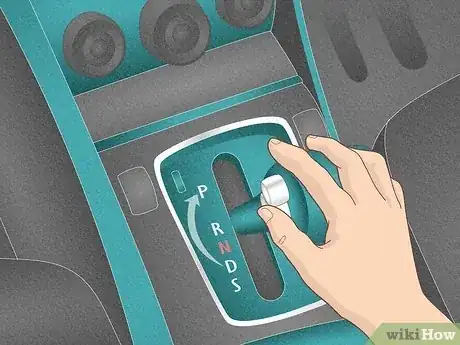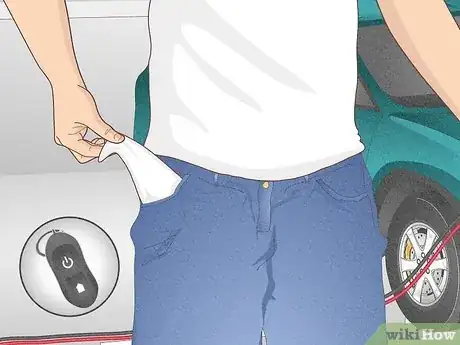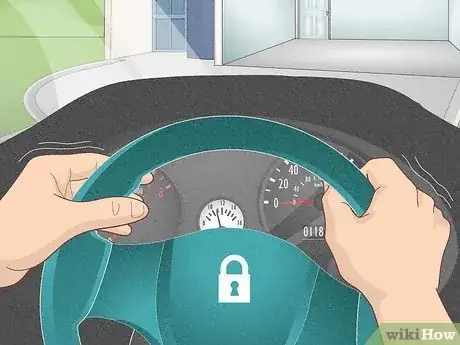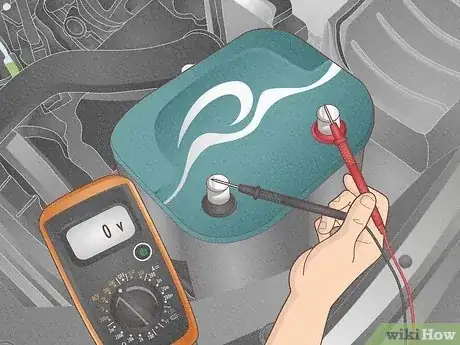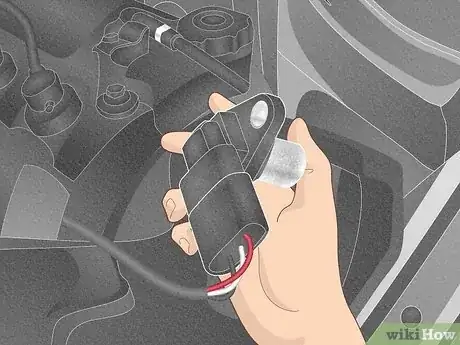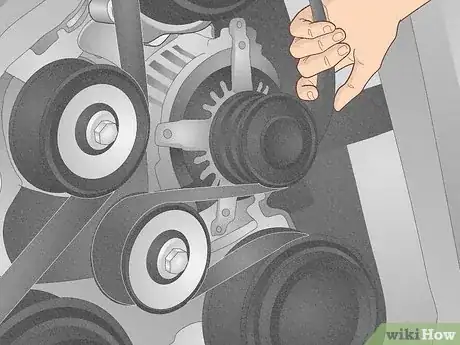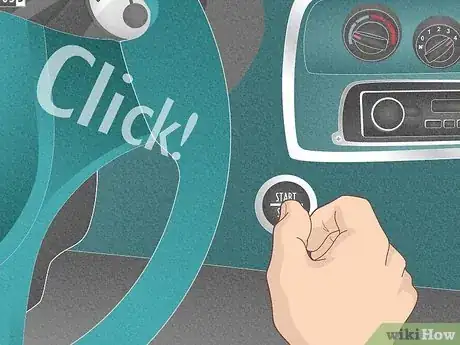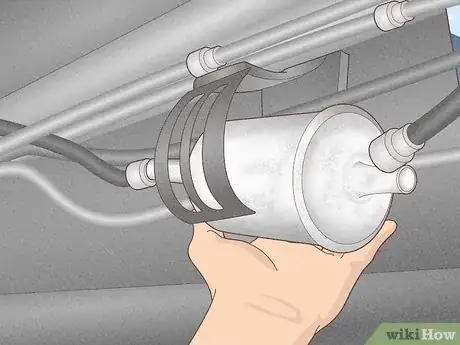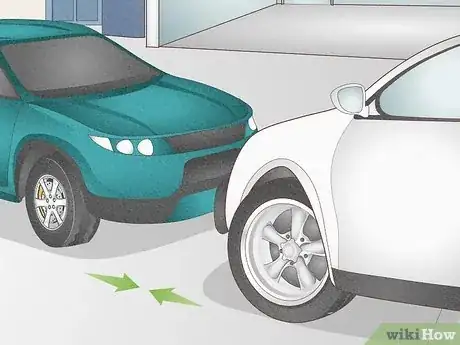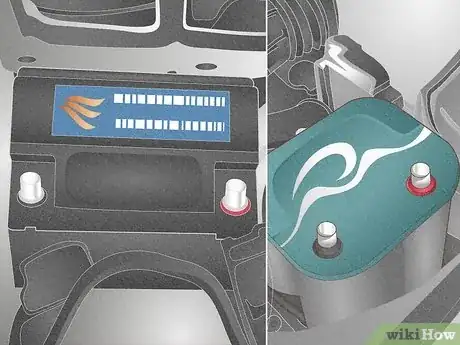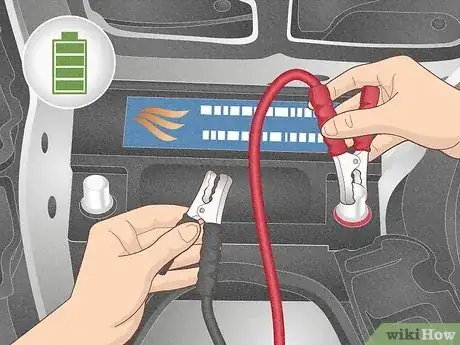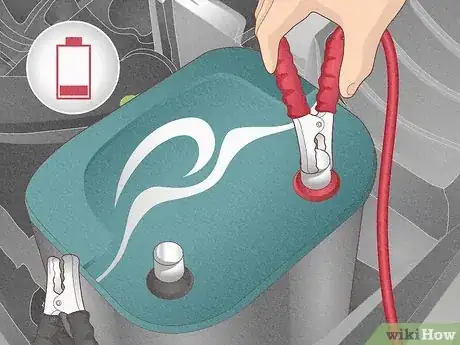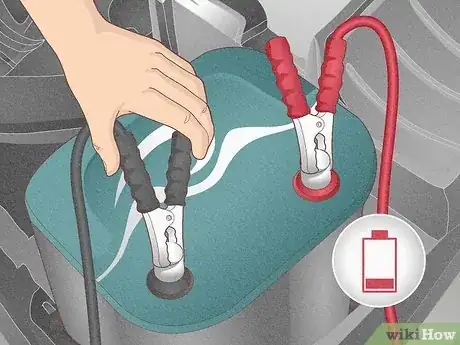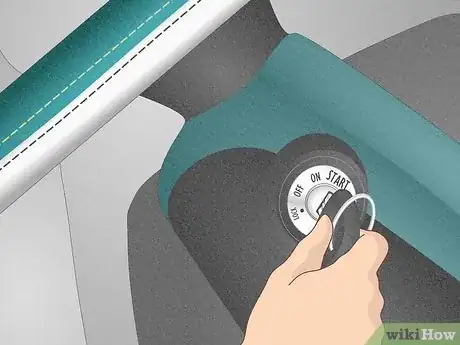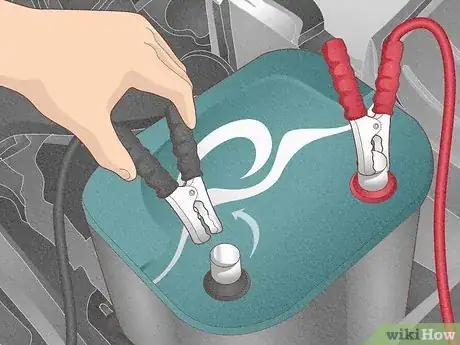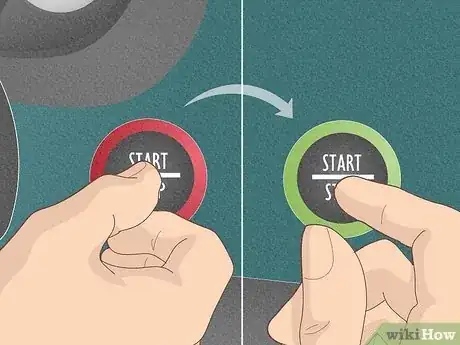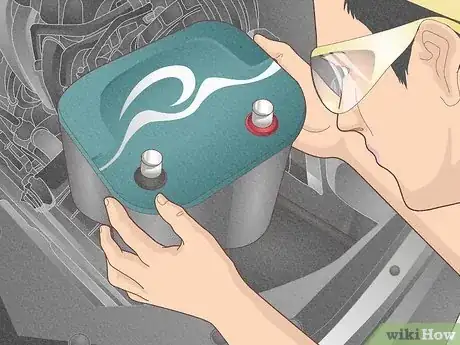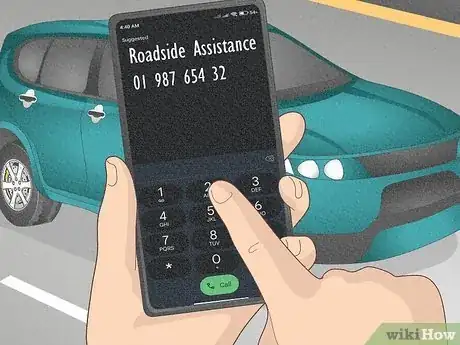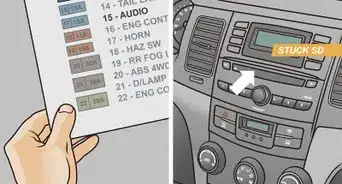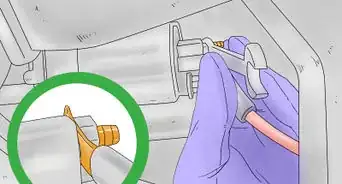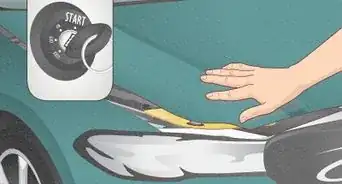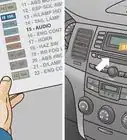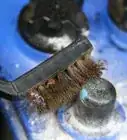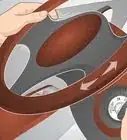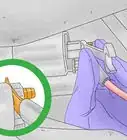This article was written by Ed Beery and by wikiHow staff writer, Johnathan Fuentes. Ed Beery is an Automotive Specialist and the Owner of InTechgrity Automotive Excellence based in Denver, Colorado. With more than eight years of experience, he specializes in providing maintenance and repair services for both individuals and companies. Ed and the InTechgrity Automotive Excellence Team are approved by the American Automobile Association (AAA) for repairs and are Automotive Service Excellence (ASE) certified.
This article has been viewed 4,997 times.
Are you stuck on the side of the road, trying to jump your car to no avail? We’re here to help. There are lots of reasons why your car won’t start even with a jump, like a bad alternator, faulty battery, or just being out of gas, to name a few. Before you give up and call a mechanic, we're here to help you figure out what might be going on and provide solutions that might fix the problem altogether. Keep reading for a list of common reasons why your car may not start with a jump, plus tips to get it running without having to pay someone to fix it.
This article is based on an interview with our automotive specialist, Ed Beery, owner of InTechgrity Automotive Excellence. Check out the full interview here.
Things You Should Know
- There are many reasons why a car won’t start with a jump, like battery degradation, electrical problems, and software issues, to name a few.
- Make sure your car is not out of gas, and that the transmission is set to neutral or park. Check your jumper cables for any damage or wear.
- When in doubt, call for roadside assistance or take your car to a mechanic. They’ll be able to address specific problems, such as a dead alternator.
- To jump your car correctly, connect jumper cables to both battery terminals of the working car, plus the positive terminal and a ground point in the non-working car.
Steps
Common Reasons Why Your Car Won’t Start with a Jump
-
1You’re not in neutral or park. Your car has a safety switch that prevents your car from starting when it’s in gear.[1] Make sure your transmission is set to park or neutral, then try jumping it again.
- Your car’s safety switch can also malfunction, preventing the car from detecting which gear is selected. A mechanic can diagnose issues with your safety switch.[2]
-
2You forgot your key fob (or it’s out of battery). A key fob is an electronic key that sends a signal to the car, permitting it to start and run. Some cars have a slot (similar to a keyhole) for a key fob in the spot where a conventional key would go. Other cars don’t have keyholes at all, so the only way to start them is to have your key fob somewhere in the car.[3]
- If your car doesn’t have a slot to insert your key fob, check to make sure you have your key fob in the car or somewhere on your person.
- If your car does have a place to insert your key fob, make sure it’s inserted correctly.
- If you’ve definitely inserted your key fob correctly, or it’s somewhere in the car with you (if your car has no slot for it), then it’s possible that the key fob’s battery is dead. Replace its battery and try starting your car again.
Advertisement -
3Your steering wheel is locked. To make them harder to steel, many modern cars have steering wheels that lock automatically when the key is not in the ignition. This is usually a good thing. However, when your steering wheel gets stuck in the locked position, it could prevent the car from starting to begin with.[4]
- To fix this, insert your key (or press the car’s start button) and try turning the wheel side to side to disengage the locking mechanism.
-
4You’re out of gas. This one may seem obvious, but your car won’t start if the gas tank is empty. Running out of gas can happen for many reasons, including a faulty fuel gauge, which could prevent you from realizing that you were running low.[5]
- Add a small amount of fuel to your car before trying to start it. You can go to a gas station and add gas directly to a fuel jug. Then add the fuel to your gas tank the way you normally would at a fuel pump.
-
5Your jumper cables are broken. Cheap or damaged jumper cables might not deliver electricity correctly. Inspect your cables for tears, frayed wiring, or melted rubber insulation. If you spot any obvious damage, don’t use them.
- Try a different set of jumper cables if you’re not sure whether yours are working.
-
6Your battery is defective. A dead or degraded battery won’t deliver enough power to start your car. While a jump should charge a dead battery in most cases, a battery can also be “too dead”—that is, unable to hold a charge anymore. This can happen when the battery gets too old, or if it gets damaged somehow. In this case, the car might still jumpstart, but it could die again soon afterward.[6]
- Use a voltmeter to check your car battery, or ask a mechanic to do so. If the output reads less than 12.4 volts, you may need to replace the battery.[7]
-
7Your car’s electronics are malfunctioning. If your car’s lights, radio, and other basic systems seem to work fine, but the engine still won’t start, there might be a problem somewhere in your car’s electronics. There could be a problem with the engine computer, a broken sensor, or some other issue.
- A fault in your car’s electronics can be hard to diagnose on your own. Take it to a local mechanic, or to a dealership where you’ll find someone with expertise in your car’s specific make and model.
-
8The alternator is bad. Your alternator converts some of your engine’s output into electricity, which in turn charges your battery. A dead or faulty alternator will prevent your car from starting or running for more than a few minutes.[8]
- Ask a mechanic to check your alternator and replace it if needed.
-
9Your starter is broken. The starter’s job is to get your engine moving. If you hear a clicking noise (either a single loud click or repeated clicking) when you attempt to start your car, it’s possible that your starter is bad.[9]
- Take your car to a shop to have a pro diagnose issues with your starter, and replace it if needed.
-
10Your car’s fuel system isn’t working properly. A car’s fuel system consists of multiple components, including the gas tank, fuel filter, fuel pump, and injectors. When one of these parts breaks down, your car may run poorly or fail to start altogether.[10]
- As with alternators, starters, and other electrical issues, take your car to a mechanic to fix problems with its fuel system.
-
11You’re not jumping the car correctly. There's a pretty specific process to follow to jumpstart your battery. Scroll down to the next section for our step-by-step guide to jumping your car. Check each step to make sure you’re following it correctly.
- You can also refer to your car’s owner’s manual for a section on jumping/emergency starting.
How to Jump your Car Correctly
-
1Park both vehicles nose-to-nose or side-by-side so the cables can reach. If possible, do this in a safe location like a quiet street or parking lot.
- Make sure both steering wheels are pointed away from traffic or other hazards.
- You may need to move your car to a good spot by putting it in neutral and having someone push it from behind.
- If your car has broken down in the middle of a busy road or highway, don’t attempt to move it yourself. Call for a tow truck or roadside assistance.
-
2Locate the batteries in both cars. Most car batteries are found in the engine compartment. However, some cars have their batteries in odd locations, such as in the trunk or underneath a seat inside the car.
- If you can’t find the batteries, check each car’s manual for the exact battery location.
- Some batteries have plastic covers on them. If yours does, carefully remove this cover and set it aside.
-
3Place the red clamp on the (+) terminal of the working car’s battery. This is the positive terminal, and it’ll be labeled in red. Do this with one hand while holding the corresponding black clamp in your other hand. Make sure the clamps on the opposite end of the jumper cables don’t touch each other. This could short-circuit the battery and damage it.
- If possible, have someone assist you by holding the other end of the jumper cables to make sure they remain separate.
- To prevent electric shocks, never touch the battery terminals with your hands. Never touch the metal clamps once they are connected to the battery, either.
-
4Place the black clamp on the (-) terminal of the working car’s battery. This is the negative terminal, and it’ll be labeled in black. Once you’ve done this, the jumper cables are “live,” meaning they are carrying electricity. Take extra care not to touch the exposed metal parts of the clamps.
- Be sure to prevent the clamps on the other end of the cable from touching each other.
-
5Place the other red clamp on the (+) terminal of the dead car’s battery. Again, this is the positive terminal, and it’ll be labeled in red. Hold the remaining black clamp in your other hand as you do this. Make sure the clamp does not touch your skin or the car battery.
-
6Place the remaining black clamp on a ground point on the dead car. A ground point can be the engine block, or any piece of exposed metal far from the battery.
- Do not connect the black clamp to the black negative (-) terminal on the non-working car.
-
7Start the working car and let it idle. This helps charge the dead battery in the non-working car. Wait a few minutes before starting the non-working car.
- Press the gas pedal in the working car to throttle the engine. This helps increase the amount of power delivered to the dead car’s battery.
-
8Start the dead car after a few minutes. If it starts, leave it running to charge up the dead battery. Don’t attempt to drive it until it’s been running for a few minutes.
- Press the gas pedal on the jumped car to throttle the engine. This delivers more power, which helps charge the battery.
-
9Remove the jumper cables in the reverse order that you attached them. Starting with the car that was jumped, remove the black clamp from the ground point. Then remove the corresponding red clamp from the jumped car’s battery. Once both clamps are removed from the jumped car, remove the red clamp from the other car’s battery, followed by the remaining black clamp.
- Once all 4 clamps have been removed, they are no longer “live,” meaning they aren’t carrying electricity. Place your cables in your car’s trunk or another storage compartment for future use.
-
10Turn the jumped car off and on again after letting it run for a few minutes. Trying to start the car again will ensure the battery has charged properly. If the car won’t start, you probably need a new battery. Jump the car again and drive to a mechanic to replace the battery right away.
- While it’s possible to replace a car battery yourself, it’s safer to let a mechanic do it.
What to Do When a Jump Doesn’t Work
-
1Have a mechanic examine your car. Explain that the car won’t start with a jump. Tell them about any problems you’ve had before, including breakdowns, accidents, or ongoing mechanical issues.
- Have a tow truck take your car to a mechanic. If your car is in a garage or parking lot, leave it there until the truck arrives.
- Don’t try to move your car yourself if it breaks down on a highway, busy street, or in an unsafe area. Stay in your car until the tow truck arrives.
-
2Call for roadside assistance if you have it. Contact your roadside assistance provider and give them your exact location, along with any other information they request. Explain that your car won’t start with a jump. Call for police support as well if you’re worried about your safety.
- Roadside assistants will come to your car wherever it breaks down, when possible. They’ll be able to diagnose basic problems, jump-start your vehicle, or have your car taken to a mechanic.
- You can also call for help in unsafe weather conditions, such as in heavy rain or snow.
References
- ↑ https://knowhow.napaonline.com/how-does-a-neutral-safety-switch-work/
- ↑ https://knowhow.napaonline.com/how-does-a-neutral-safety-switch-work/
- ↑ https://www.mentalfloss.com/article/639812/common-reasons-your-car-will-not-start
- ↑ https://www.mentalfloss.com/article/639812/common-reasons-your-car-will-not-start
- ↑ https://www.mentalfloss.com/article/639812/common-reasons-your-car-will-not-start
- ↑ https://www.readersdigest.ca/cars/maintenance/dead-car-battery/
- ↑ https://www.readersdigest.ca/cars/maintenance/dead-car-battery/
- ↑ https://www.mentalfloss.com/article/639812/common-reasons-your-car-will-not-start
- ↑ https://www.mentalfloss.com/article/639812/common-reasons-your-car-will-not-start
